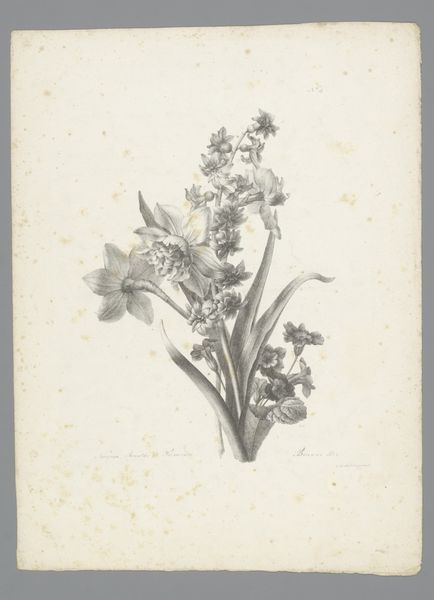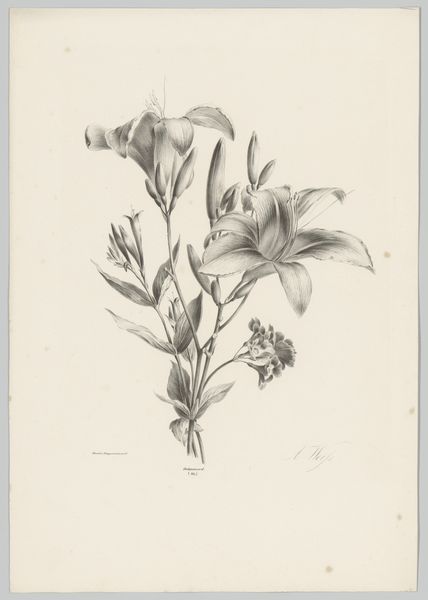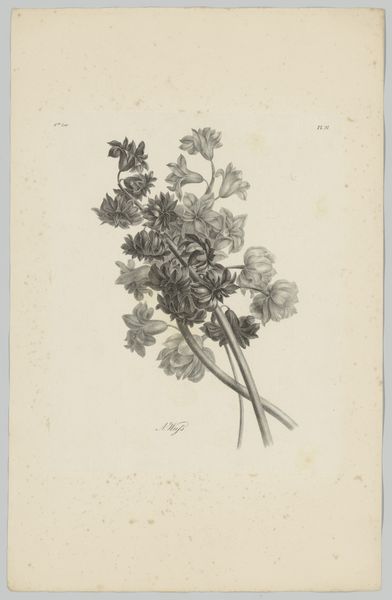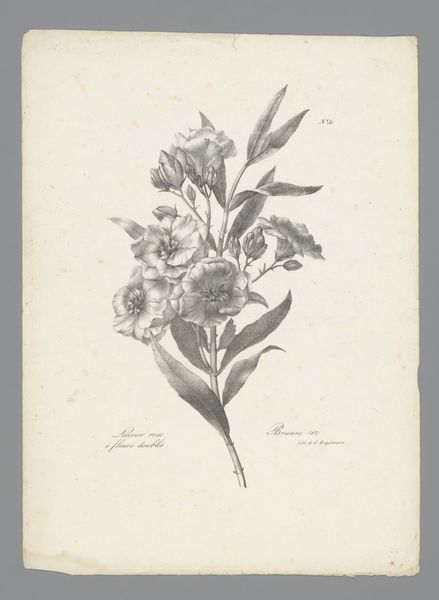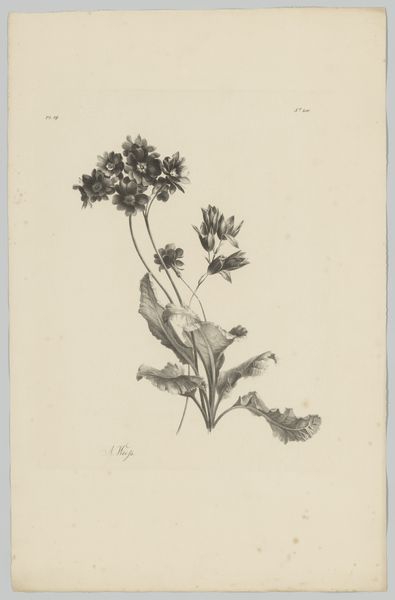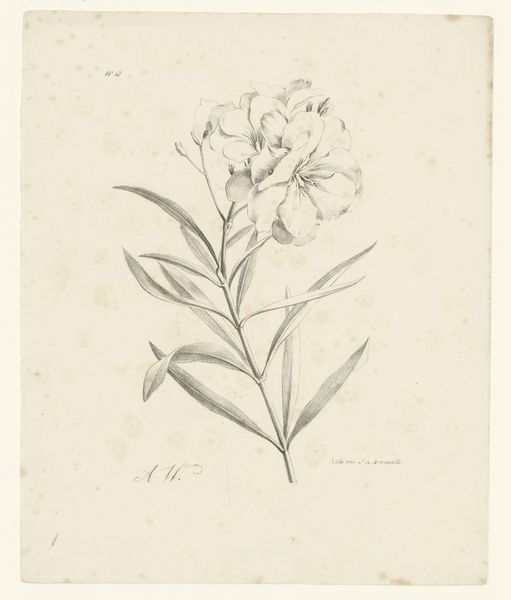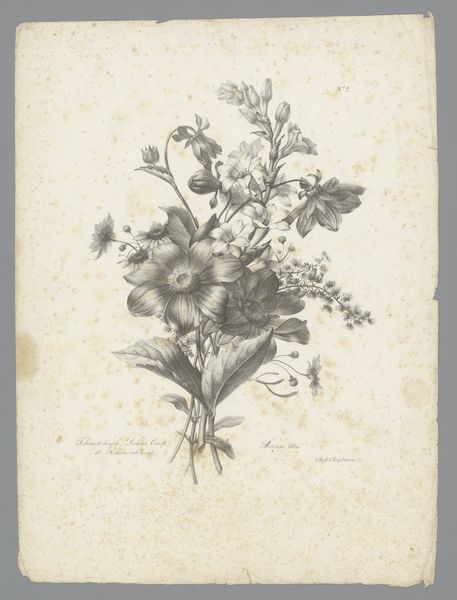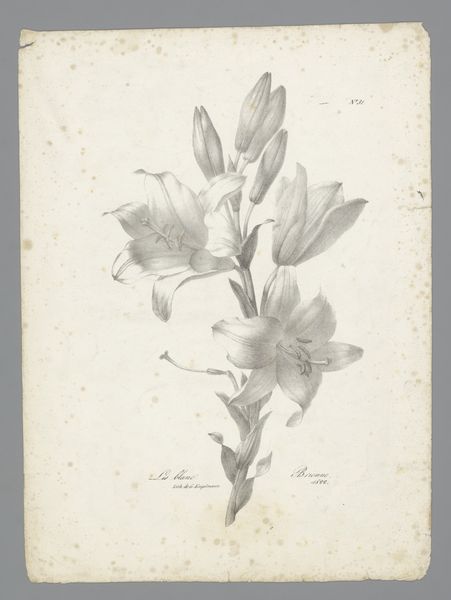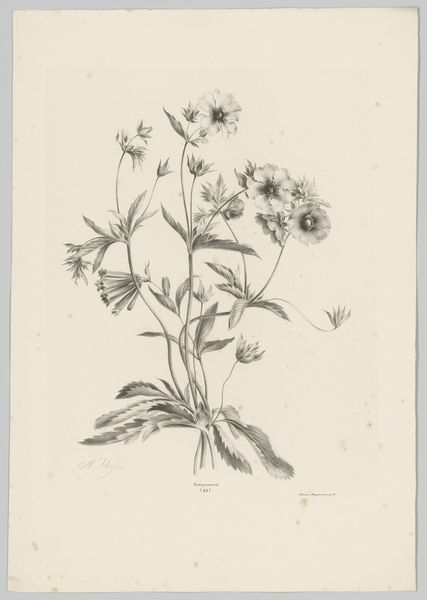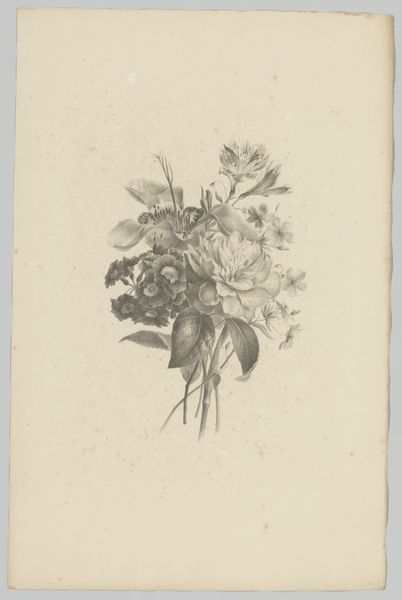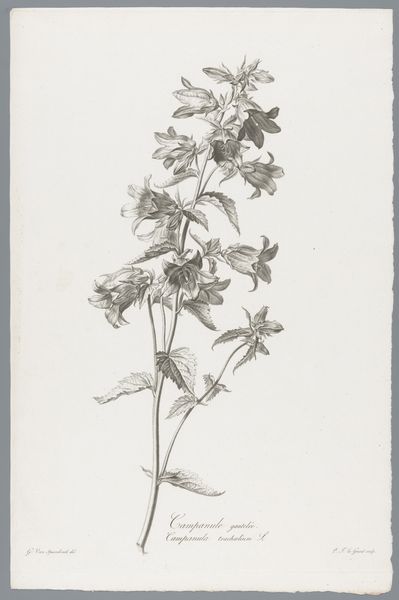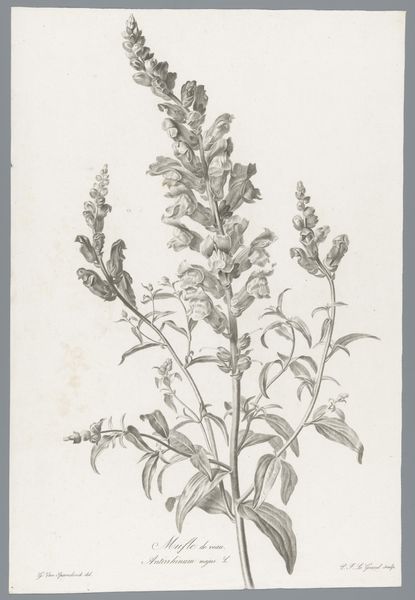
drawing, paper, pen
#
drawing
#
water colours
#
flower
#
paper
#
romanticism
#
pen
#
watercolour illustration
#
botanical art
#
watercolor
#
realism
Dimensions: height 481 mm, width 310 mm
Copyright: Rijks Museum: Open Domain
Curator: This is "Bloemen," a botanical drawing from between 1820 and 1833 by Anton Weiss, housed right here in the Rijksmuseum. Editor: The subdued palette of this floral study strikes me instantly—the paper seems to almost whisper tales of time, enhancing the fragile beauty of the subject matter. Curator: Weiss executed this drawing using pen and watercolors on paper, exhibiting elements of both Romanticism and Realism. I’m drawn to think about the kind of labor this required and how it’s situated in both the fine art world of drawing but is closely allied to other kinds of work like scientific illustration. Editor: Exactly, its cultural moment must have fostered a deep fascination with botany and naturalism, driven by scientific expeditions and the emerging professionalization of science that sought detailed records like these. This intersects with art through patronage: perhaps Weiss was employed by someone keen to document new botanical specimens? Curator: The artwork's medium also contributes to our perception, watercolor’s delicate washes allow the artist to achieve fine details, bringing an almost hyper-realism to the blooms, while retaining the soft touch of Romantic sensibilities. Was this piece made for scholarly purposes or personal artistic expression? How were such materials obtained and shared? Editor: The institutions play a crucial role here. The Rijksmuseum, for instance, displays and contextualizes such works. That placement changes its meaning. Viewing this, it sparks the question of the changing public perceptions regarding nature and its representation. I think about colonial explorations as well, the rise of botanical gardens as sources for study, all tied up with national prestige. Curator: Thinking about its context – you make me see how this object encapsulates 19th-century artistic skill, access to rare plants perhaps from a vast colonial trade network, and the tools available. What do you think of that subtle texture the artist rendered upon the flower petals and the leaves using just pen, ink, and diluted color washes? Editor: Precisely, these historical documents shape our knowledge. Its legacy isn't just about pretty pictures but about power structures. Seeing this today reminds me to consider whose story gets told through these meticulously created artifacts and their continuing role in visual culture. Curator: Absolutely, considering "Bloemen" in its entirety opens our minds to a broader consideration beyond the immediately visible. Editor: Agreed. It is rewarding to look more closely at how artworks like "Bloemen" functioned within their world, as well as our own.
Comments
No comments
Be the first to comment and join the conversation on the ultimate creative platform.
